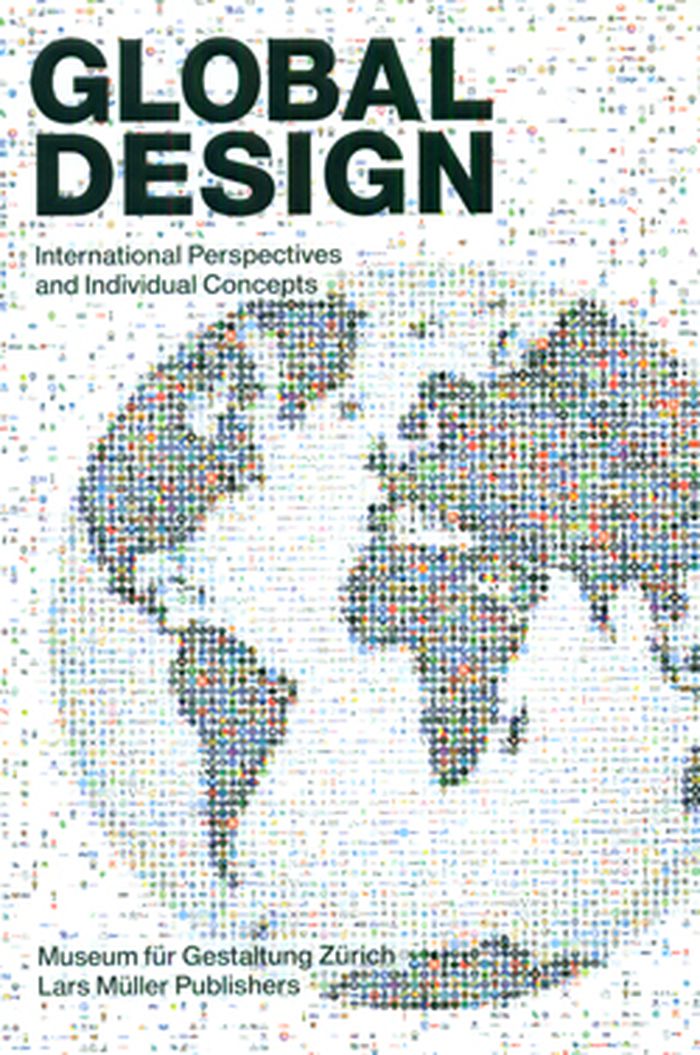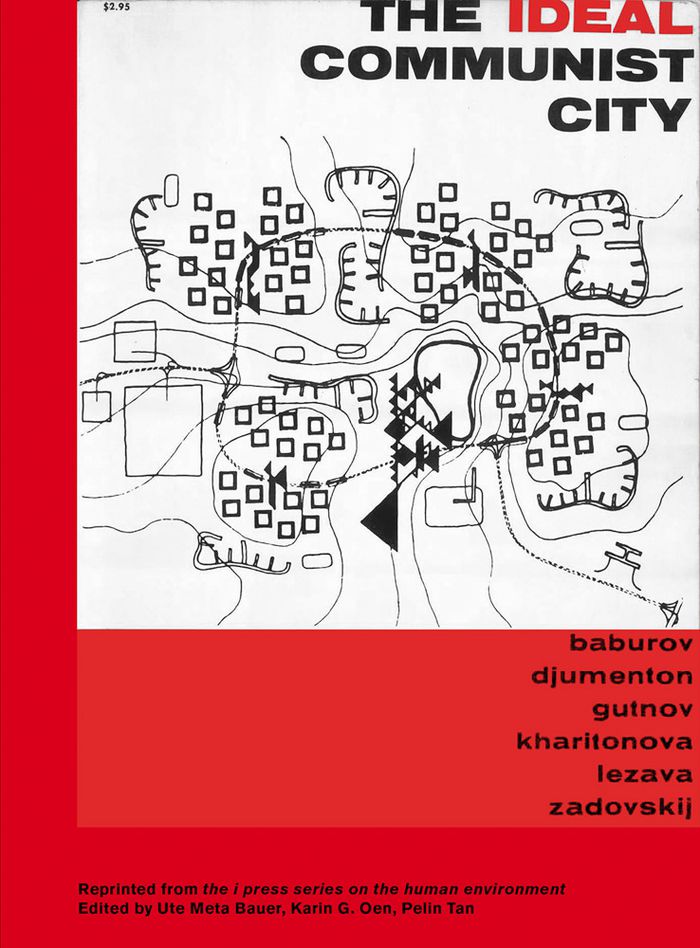Infinite suburbia
$106.00
(available to order)
Summary:
Infinite Suburbia is the culmination of the MIT Norman B. Leventhal Center for Advanced Urbanism's yearlong study of the future of suburban development. Extensive research, an exhibition, and a conference at MIT's Media Lab, this groundbreaking collection presents fifty-two essays by seventy-four authors from twenty different fields, including, but not limited to, design,(...)
Infinite suburbia
Actions:
Price:
$106.00
(available to order)
Summary:
Infinite Suburbia is the culmination of the MIT Norman B. Leventhal Center for Advanced Urbanism's yearlong study of the future of suburban development. Extensive research, an exhibition, and a conference at MIT's Media Lab, this groundbreaking collection presents fifty-two essays by seventy-four authors from twenty different fields, including, but not limited to, design, architecture, landscape, planning, history, demographics, social justice, familial trends, policy, energy, mobility, health, environment,economics, and applied and future technologies. This exhaustive compilation is richly illustrated with a wealth of photography, aerial drone shots, drawings, plans, diagrams, charts, maps, and archival materials, making it the definitive statement on suburbia at the beginning of the twenty-first century.
Urban Theory
Global design
$60.00
(available to order)
Summary:
This volume surveys the ways in which our globalized world has manifested itself in design since ca 1970, and the ways in which design has evolved to serve a globalized world. The point of departure is a conception of design which encompasses -architecture, graphics, the media, fashion, product and industrial design, as well as the shaping of the manmade environment and(...)
Global design
Actions:
Price:
$60.00
(available to order)
Summary:
This volume surveys the ways in which our globalized world has manifested itself in design since ca 1970, and the ways in which design has evolved to serve a globalized world. The point of departure is a conception of design which encompasses -architecture, graphics, the media, fashion, product and industrial design, as well as the shaping of the manmade environment and of production processes. The focus is on the formation of global networks in the areas of communication, production, commerce, finance, and mobility. The diverse phenomena of globalization are visualized through film, products, clothing, images, and models by well-known artists such as Armin Linke, Fischli Weiss, Didier Faustino, and Thomas Demand. Alongside the shipping container, an indispensable element of globalization, the presentation provides insights into cultural transfer both in the present day and historically, and presents -globalization in relationship to regionalism as well as to worldwide trends.
Industrial Design
books
$148.50
(available to order)
Summary:
Offices, as a category of building, have probably faced more challenges and undergone more dramatic changes in the last few years than most other kinds of buildings. Increasing economic globalization, new information and communication technologies, and ecological considerations are all making demands on a branch of architecture which for nearly a century had been marked(...)
Commercial interiors, Building types
September 2002, Basel
Office buildings : a design manual
Actions:
Price:
$148.50
(available to order)
Summary:
Offices, as a category of building, have probably faced more challenges and undergone more dramatic changes in the last few years than most other kinds of buildings. Increasing economic globalization, new information and communication technologies, and ecological considerations are all making demands on a branch of architecture which for nearly a century had been marked by the construction norms and standards, and the requirements of office organisation. These old solutions are, however, no longer viable for many modern companies, where flexibility and mobility determine the working day of a new generation of office nomads, and architecture is having to adapt. With some 70 significant international examples taken from the last five years (including examples from Norman Foster, Frank O. Gehry, Thomas Herzog, Morphosis MVRDV, Renzo Piano, SOM), the authors and editors show how the new issues facing architects can be resolved. In addition to introductory texts there are also thematic contributions by experts in various disciplines on related topics including the new models of work organisation, façade technology, climatic regulation, lighting etc. Similar to our enormously successful Floor Plan Atlas, this volume will be a crucial standard work in the design of offices.
books
September 2002, Basel
Commercial interiors, Building types
$27.00
(available to order)
Summary:
Whether a humble string of planks swaying across a trickling stream or the soaring towers of the Golden Gate Bridge, bridges are one of man’s great engineering feats. Now in Bridge, Peter Bishop provides a comprehensive historical account of their role in the advancement of human culture. From ancient Roman arches to the rail bridge of Lhasa to the suspension bridge(...)
Bridge
Actions:
Price:
$27.00
(available to order)
Summary:
Whether a humble string of planks swaying across a trickling stream or the soaring towers of the Golden Gate Bridge, bridges are one of man’s great engineering feats. Now in Bridge, Peter Bishop provides a comprehensive historical account of their role in the advancement of human culture. From ancient Roman arches to the rail bridge of Lhasa to the suspension bridge over Niagara Falls, Bishop traverses the full span of the globe to examine numerous incarnations and their diverse architectural styles. The book tackles a wide range of issues, including the design and construction of “mega-spans” such as Hong Kong’s Tsing Ma Bridge; the integral role of bridges in railroad networks; and the social dynamics of class and mobility that surround urban bridges in cities such as New York. Drawing upon sources in art, politics, science, philosophy, and the media, Bishop argues that the cultural meaning of bridges today revolves around the idea of expanding geographical claims, rather than connecting to others, and he explores the implications of that idea for the future. A fascinating and richly illustrated study, Bridge will engage enthusiasts of planning, architecture, and design alike.
Engineering Structures
The ideal Communist city
$35.00
(available to order)
Summary:
In 1968, lauded American architect Mary Otis Stevens (born 1928) and her partner, fellow architect Thomas McNulty (1919–84), initiated i Press, the influential imprint that focuses on the social context of architecture. Over the next five years, the duo released five books under the thematic umbrella of ''Human environment'' with the publisher George Braziller. The first(...)
Humans and cities
November 2022
The ideal Communist city
Actions:
Price:
$35.00
(available to order)
Summary:
In 1968, lauded American architect Mary Otis Stevens (born 1928) and her partner, fellow architect Thomas McNulty (1919–84), initiated i Press, the influential imprint that focuses on the social context of architecture. Over the next five years, the duo released five books under the thematic umbrella of ''Human environment'' with the publisher George Braziller. The first of this series, ''The ideal Communist city'' (1969) is an English translation of urban concepts advanced by architects and planners from the University of Moscow. The book was first published in a Soviet journal of a communist youth organization in 1960 and was then republished in Italy in 1968. Offering a new way of thinking about mobility, equity and social interaction in neighborhood planning, ''The ideal Communist city'' was a direct response to suburban development and its focus on private spaces for family life: ''the new city is a world belonging to all and each'' where life is ''structured by freely chosen relationships representing the fullest, most well-rounded aspects of each human personality.'' This publication is a facsimile of ''The ideal Communist city'', with additional texts by architectural historians and the editors.
Humans and cities



